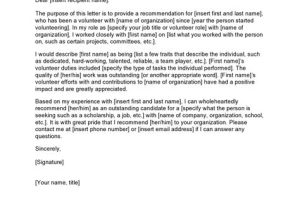Table of Contents
Looking to build a successful volunteer program? Discover essential strategies and best practices for creating an effective volunteer program that engages and motivates your volunteers. Learn how to recruit, train, and retain volunteers, as well as how to establish clear goals and expectations. Start building a strong and impactful volunteer program today!
Building a volunteer program is a crucial step towards creating a positive impact in your community. Whether you are a non-profit organization, a school, or a corporation, engaging volunteers not only benefits those in need but also provides an enriching experience for the individuals involved. Transitioning from a traditional model to a volunteer-based approach requires careful planning, effective communication, and a well-structured program. This article will guide you through the essential steps of building a volunteer program that will attract dedicated individuals, foster teamwork, and ultimately achieve your organization’s goals.
Introduction
Building a volunteer program is an essential endeavor for any organization looking to make a positive impact on their community. By engaging volunteers, organizations can expand their reach, increase their capabilities, and create a strong network of passionate individuals dedicated to their cause. However, establishing a successful volunteer program requires careful planning, effective management, and clear communication. In this article, we will explore the key steps and strategies involved in building a volunteer program that thrives and makes a meaningful difference.
Step 1: Assessing Organizational Needs
Before embarking on the journey of building a volunteer program, it is crucial to assess your organization’s needs and identify where volunteers can contribute most effectively. Conduct an internal evaluation to determine areas that require additional support or expertise. This assessment will help you define the roles and responsibilities volunteers can take on, ensuring that their efforts align with your organization’s mission and objectives.
Step 2: Defining Volunteer Roles and Expectations
Clear and well-defined volunteer roles are essential for both the organization and the volunteers themselves. Take the time to outline specific tasks, responsibilities, and expectations for each role. This clarity will help volunteers understand their contribution and enable them to make a more significant impact. Clearly communicate the time commitment, required skills, and any necessary training to ensure that volunteers are equipped to fulfill their roles effectively.
Step 3: Developing a Volunteer Recruitment Strategy
A successful volunteer program relies on attracting the right individuals who are passionate about your cause. Develop a comprehensive recruitment strategy that includes various channels such as social media, community events, and online platforms dedicated to volunteering. Tailor your messaging to highlight the benefits of volunteering with your organization and emphasize the positive impact volunteers can make.
Step 4: Implementing an Effective Screening Process
It is crucial to implement an effective screening process to ensure the safety and suitability of volunteers for their respective roles. This process may involve background checks, interviews, reference checks, or other verification methods. By thoroughly vetting potential volunteers, you can create a secure environment for all parties involved and maintain the integrity of your organization.
Step 5: Providing Comprehensive Training
Equipping volunteers with the necessary knowledge and skills is key to their success in fulfilling their roles. Develop a comprehensive training program that covers the organization’s mission, values, policies, and specific job-related skills. Provide ongoing support and resources to ensure volunteers feel confident and prepared to contribute effectively.
Step 6: Establishing Effective Communication Channels
Open and effective communication is vital in any volunteer program. Establish clear channels for volunteers to reach out, ask questions, and provide feedback. Regularly update volunteers on organizational news, events, and opportunities. Foster a sense of community by facilitating connections between volunteers and encouraging collaboration.
Step 7: Recognizing and Appreciating Volunteers
Showcasing appreciation for the hard work and dedication of your volunteers is essential to maintaining their motivation and commitment. Implement a recognition program that acknowledges and celebrates the contributions of volunteers. This can include public recognition, appreciation events, volunteer spotlights, or personalized thank-you notes. Make volunteers feel valued and integral to the success of your organization.
Step 8: Evaluating and Adjusting the Program
Regularly assess the effectiveness of your volunteer program through feedback surveys, performance evaluations, and monitoring key metrics. Analyze the impact of volunteers on your organization’s goals and identify areas for improvement. Use this information to make necessary adjustments and enhancements to the program, ensuring its continued growth and success.
Step 9: Building Long-Term Relationships
Building a volunteer program is not just about short-term commitments; it is about fostering long-term relationships with volunteers. Provide opportunities for growth and advancement within the program, allowing volunteers to take on more significant responsibilities or leadership roles. Maintain regular communication with volunteers even after their service ends, ensuring they feel connected and valued.
Step 10: Celebrating Achievements
Celebrate the achievements of your volunteer program by showcasing the impact made by volunteers. Share success stories, testimonials, and statistics that demonstrate the difference volunteers have made in the lives of those you serve. Celebrating achievements not only recognizes the efforts of volunteers but also inspires others to get involved and contribute to your cause.
Conclusion
Building a successful volunteer program requires careful planning, effective management, and continuous evaluation. By following the steps outlined in this article, organizations can create a vibrant volunteer program that attracts passionate individuals, maximizes their impact, and creates lasting change in the community. Remember, volunteers are the heart and soul of any organization, and nurturing their involvement is key to achieving your mission.
Building A Volunteer Program
In order to establish a successful volunteer program, several key steps must be taken to ensure its effectiveness and efficiency. By following these guidelines, organizations can build a volunteer program that not only meets their needs but also fosters strong relationships with dedicated volunteers.
Identifying Organizational Needs and Goals
The first step in building a volunteer program is to identify the specific needs and goals of your organization. This requires a thorough understanding of the tasks or projects that require volunteer assistance, as well as aligning them with the overall mission and objectives of the organization. By clearly defining these needs and goals, organizations can attract volunteers who are passionate about their cause and capable of making a meaningful impact.
Developing Clear Volunteer Job Descriptions
Once the organizational needs and goals have been identified, it is crucial to develop clear and detailed job descriptions for each volunteer position. These descriptions should outline the responsibilities, qualifications, and time commitments required for each role. By providing this information upfront, organizations can ensure that potential volunteers have a clear understanding of what is expected of them and can make an informed decision about whether or not they are a good fit for the position.
Recruiting and Selecting Volunteers
The success of a volunteer program heavily relies on recruiting individuals who are passionate about the organization’s cause. There are various recruitment strategies that can be utilized, such as posting opportunities on online platforms, collaborating with community organizations, and spreading the word through personal networks. By targeting individuals who have a genuine interest in the organization’s mission, organizations can increase the likelihood of attracting dedicated and committed volunteers.
Orienting and Training Volunteers
Once volunteers have been recruited, it is essential to provide them with a comprehensive orientation and training program. This ensures that they are equipped with the necessary knowledge, skills, and resources to fulfill their roles effectively. Orientation sessions should cover important organizational information, such as the mission, values, and policies, while training programs should focus on specific job-related skills and tasks. By investing time in orienting and training volunteers, organizations can set them up for success and ensure they are able to make a meaningful impact.
Establishing Effective Volunteer Management Systems
An effective volunteer management system is essential for organizing and coordinating volunteer activities. This includes developing processes for volunteer scheduling, tracking volunteer hours, and maintaining regular communication channels. By implementing a robust volunteer management system, organizations can streamline their operations and ensure that volunteers have a clear understanding of their roles and responsibilities. This also allows for effective communication between volunteers and staff, fostering a positive and productive working environment.
Recognizing and Appreciating Volunteers
Demonstrating appreciation and recognizing the efforts of volunteers is vital for volunteer engagement and retention. Establishing a recognition program that acknowledges their contributions can help foster a sense of belonging and commitment to the organization’s cause. This can be done through various means, such as organizing volunteer appreciation events, sending thank-you notes, or providing small tokens of appreciation. By showing gratitude towards volunteers, organizations can strengthen their relationships and motivate them to continue their valuable work.
Evaluating Volunteer Program Effectiveness
Regularly assessing the effectiveness of a volunteer program is crucial for continuous improvement. Collecting feedback from volunteers allows organizations to identify areas for improvement and make necessary adjustments to enhance program outcomes. This can be done through surveys, focus groups, or one-on-one meetings with volunteers. By actively seeking feedback and addressing any concerns or suggestions, organizations can ensure that their volunteer program remains relevant and impactful.
Building Long-Term Relationships with Volunteers
Cultivating strong relationships with volunteers is essential for the long-term sustainability of a volunteer program. Providing opportunities for volunteers to connect with each other and with the organization’s staff fosters a sense of belonging and commitment to the cause. This can be achieved through regular volunteer gatherings, newsletters, or online forums. By creating a supportive and inclusive community, organizations can retain dedicated volunteers and benefit from their continued contributions.
In conclusion, building a volunteer program requires careful planning, effective management, and ongoing evaluation. By following these steps and prioritizing the needs and goals of the organization, organizations can establish a volunteer program that not only meets their objectives but also attracts and retains passionate and committed volunteers. With a well-structured and engaged volunteer base, organizations can make a significant impact in their communities and achieve their mission and objectives.
A volunteer program is an essential component of any organization, as it not only helps to address community needs and make a positive impact but also provides valuable opportunities for individuals to contribute their skills and time. Building a successful volunteer program requires careful planning and implementation, ensuring that both the organization and the volunteers benefit from the experience.
Here are some key points to consider when building a volunteer program:
Identify organizational objectives: Before establishing a volunteer program, it is crucial to have a clear understanding of the organization’s goals and how volunteers can support them. This includes identifying specific tasks or projects that volunteers can undertake to contribute effectively.
Recruit dedicated volunteers: Finding committed individuals who are passionate about the organization’s mission is vital. Effective recruitment strategies, such as advertising through various channels or partnering with local schools and universities, can help attract dedicated volunteers who align with the organization’s values.
Develop comprehensive volunteer policies and procedures: Creating a set of well-defined policies and procedures ensures clarity and consistency in volunteer management. This includes outlining expectations, responsibilities, and guidelines for volunteers, as well as addressing issues such as confidentiality, safety, and conflict resolution.
Provide proper training and orientation: Equipping volunteers with the necessary skills and knowledge is crucial for their success in contributing to the organization. Offering comprehensive training and orientation sessions that cover the organization’s mission, values, and specific tasks will help volunteers feel prepared and confident in their roles.
Establish effective communication channels: Open and transparent communication between the organization and its volunteers is essential for a successful volunteer program. Regular newsletters, meetings, or online platforms can be used to keep volunteers informed about upcoming events, changes in policies, and other relevant updates.
Recognize and appreciate volunteers: Recognizing and appreciating the efforts of volunteers is key to maintaining their motivation and commitment. Implementing a recognition program that acknowledges their contributions, such as volunteer of the month awards or appreciation events, goes a long way in building a positive and supportive volunteer community.
Evaluate and improve the program: Regular evaluation of the volunteer program allows for continuous improvement. Collecting feedback from both volunteers and staff members, tracking volunteer hours and impact, and assessing the overall success of the program helps identify areas of strength and areas that need enhancement.
Building a volunteer program requires dedication, organization, and effective communication. By following these key points, organizations can establish a thriving volunteer program that not only benefits the community but also provides a rewarding experience for volunteers.
Thank you for taking the time to visit our blog and learn about building a volunteer program. We hope that the information provided has been insightful and helpful to you. As you embark on this journey of creating a volunteer program, it is important to approach it with a professional voice and tone, ensuring that all aspects are thoughtfully considered and executed.
In order to build a successful volunteer program, it is crucial to have a clear vision and purpose. This will guide your program and help you attract the right volunteers who align with your organization’s mission. Additionally, setting specific goals and objectives will provide a framework for measuring the success of your program. Whether it is increasing community engagement, supporting a cause, or enhancing services, having these goals in mind will help you stay focused and motivated.
Furthermore, communication and collaboration are key components of a successful volunteer program. It is essential to establish effective channels of communication with your volunteers, whether it is through regular meetings, emails, or online platforms. This will ensure that everyone is informed about upcoming events, changes in schedules, or any other relevant information. Additionally, fostering a collaborative environment by encouraging feedback and suggestions from your volunteers will not only make them feel valued, but also contribute to the continuous improvement of your program.
In conclusion, building a volunteer program requires careful planning, clear goals, effective communication, and collaboration. By approaching this endeavor with a professional voice and tone, you will be able to create a program that not only benefits your organization, but also provides a meaningful and rewarding experience for your volunteers. Remember, it is an ongoing process that requires dedication and effort, but the impact it can have on your organization and the community is immeasurable. We encourage you to take the first step and start building your volunteer program today!
Thank you once again for visiting our blog. We wish you the best of luck in your journey towards building a successful volunteer program!
.
People also ask about Building A Volunteer Program:
What are the key steps to building a volunteer program?
How can I recruit volunteers effectively?
What are some strategies for retaining volunteers?
How can I ensure the success of my volunteer program?
Answer:
Key steps to building a volunteer program include:
- Identify your organization’s needs and goals to determine the type of volunteers you require.
- Create clear volunteer job descriptions and responsibilities.
- Establish a recruitment plan to attract potential volunteers.
- Develop a screening process to ensure the suitability of candidates.
- Provide comprehensive training and orientation to new volunteers.
- Design a supportive and inclusive volunteer environment.
- Implement effective communication channels to keep volunteers engaged.
- Recognize and appreciate the contributions of volunteers regularly.
- Evaluate the program’s success and make necessary adjustments.
To recruit volunteers effectively, you can:
- Utilize various channels like social media, community organizations, and online platforms to reach a wider audience.
- Clearly articulate the benefits and impact of volunteering with your organization.
- Establish partnerships with other local organizations to expand your volunteer network.
- Offer flexible scheduling options to accommodate different availability.
- Provide opportunities for volunteers to utilize their skills and interests.
- Engage current volunteers in referring potential candidates.
Strategies for retaining volunteers include:
- Create a positive and welcoming environment where volunteers feel valued.
- Offer ongoing training and professional development opportunities.
- Provide regular feedback and recognition for their efforts.
- Assign meaningful tasks that align with their interests and skills.
- Encourage open communication and address any concerns promptly.
- Organize social events and team-building activities to foster camaraderie.
- Ensure volunteers have access to necessary resources and support.
To ensure the success of your volunteer program, you can:
- Set clear goals and objectives for the program.
- Regularly assess and evaluate the program’s effectiveness.
- Seek feedback from volunteers to identify areas for improvement.
- Establish strong relationships with volunteers and provide ongoing support.
- Stay informed about relevant trends and best practices in volunteer management.
- Adapt and modify the program as needed to meet changing needs.
- Continuously communicate the impact and value of the program to stakeholders.






